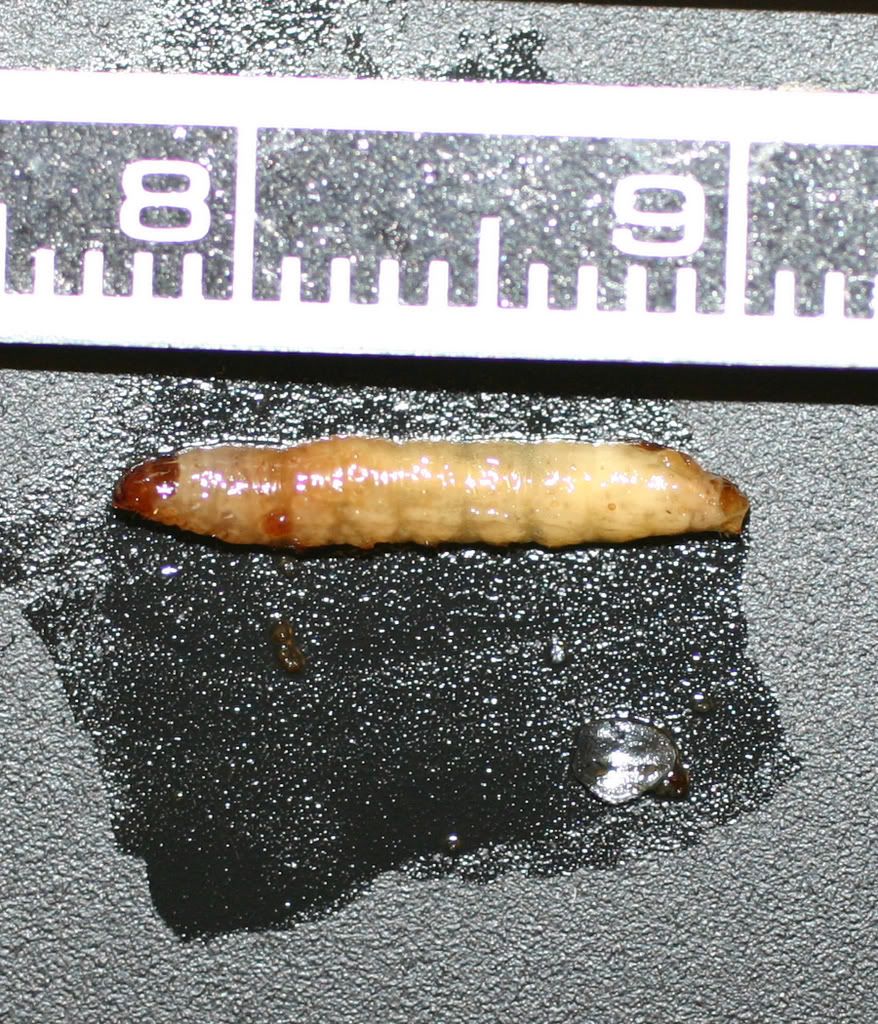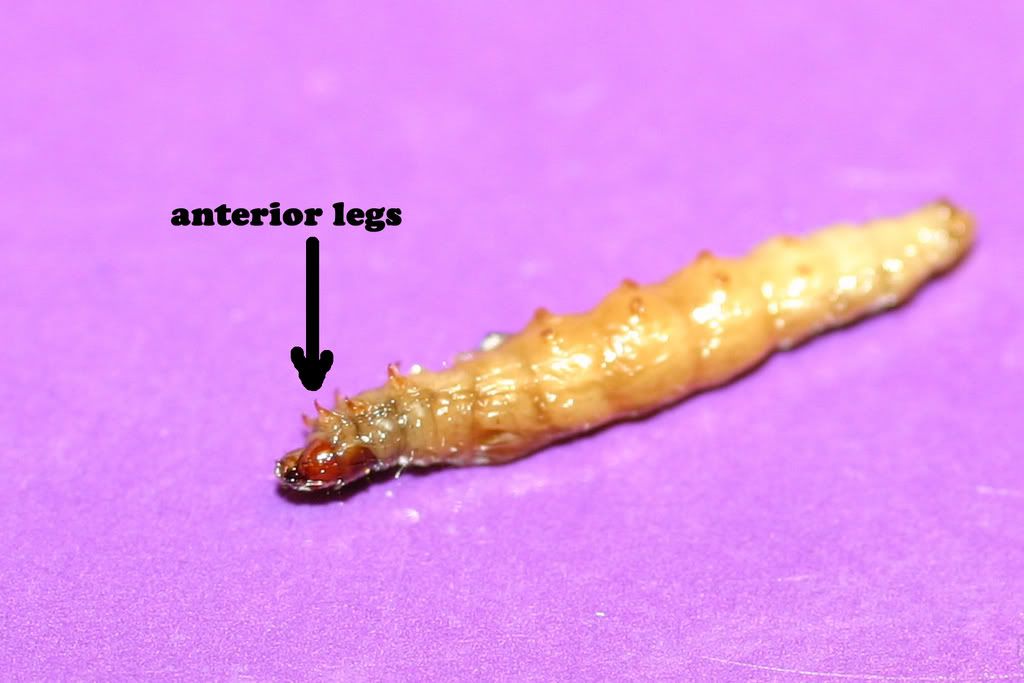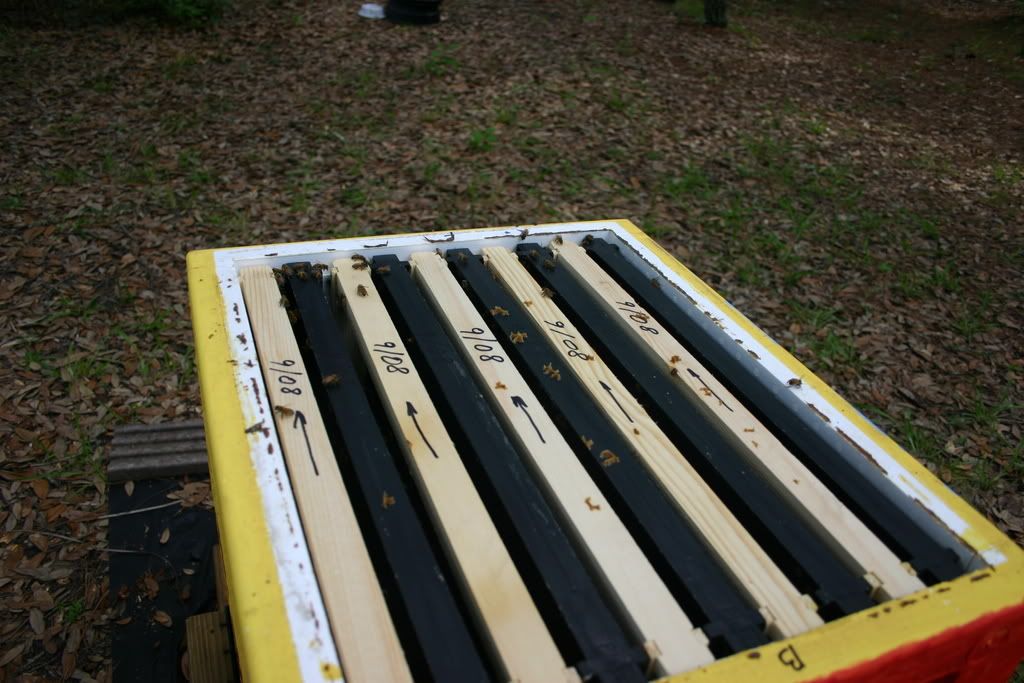It has been almost two months since I brought home the hive, and from day one there has been no lack of adult Small Hive Beetles (SHB) in the trap. I inspect the oil in the hive drawer and re-bait about every four days. The usual number of drowned adult beetles is about thirty, give or take a hand full. The only lull came about a month ago when for a week there were only four beetles in the trap. I was just one day away from cleaning the oil out of the inspection tray for good when all of the sudden the body count spiked up; twenty the first week and then back to thirty or so the following week. The trap has done its job of controlling the beetle population. There are plenty in the trap but it is very rare when I photograph or see one in the hive.
This weekend was the first time I found two SHB larvae drowned in the oil. The wax moth and the SHB larva are very similar in appearance, but my online research confirmed the fact that it was a beetle larva. The UF dept of Entomology and Nematology website helped me identify the larva. “They can easily be distinguished by the presence of six prominent anterior legs. Wax moth larvae have a number of smaller less-developed, uniform prolegs.” What does a “have a number of ” legs mean anyway??? Has no one taken the time to count how many legs the wax moth larva has??? Does MORE mean 7? maybe 8?? Anyway, the macro lens pictures show the six prominent legs, therefore SHB larva. (Click on pictures for better views, Oh and the ruler shows about 12 mm in length, NOT over and inch)
 I was somewhat alarmed, since I had added the medium supper the previous week. I had thoughts of the bees not being able to patrol the extra space, and the beetles and its larva running amok in the additional space. With that fear in my mind and curious to see if the bees had selected the plastic foundation frames, or the wooden starter strips on wooden frames, I decide to take a quick minimally invasive look.
I was somewhat alarmed, since I had added the medium supper the previous week. I had thoughts of the bees not being able to patrol the extra space, and the beetles and its larva running amok in the additional space. With that fear in my mind and curious to see if the bees had selected the plastic foundation frames, or the wooden starter strips on wooden frames, I decide to take a quick minimally invasive look.
Here is the side of my hive that had never been photographed before; it is sort of the dark side of the moon that hardly any one gets to see. The next picture is of the medium supper on the hive with the top off. The bees always seem to be building burr comb on the underside of the cover. I imagined with the additional space the top cover would have been free of bees. I was shocked to find that the top underside of the cover is as active, if not even more active, and cells are being drawn between the supper and the brood frames. There are plenty of bees hanging around the empty frames of the supper, but there seems to be no work being done on them. There should be plenty of laying space in the brood, but my goal was to be as non intrusive as possible. I’ll take a better look next Sunday. My fears were put at easy. Not a single SHB or its larva to be seen.
The goal for the next inspection is to take a look at a couple of frames with brood, honey and pollen stores. Speaking of which, this weekend I noticed dark red pollen been brought in. I found this entry on Wikipedia. I though pollen only came in yellow. I wish there was a simple way to tell where the pollen is coming from.





1 comment:
we just found larvae on the ceiling of our kitchen! Not sure what they are but they look like the pictures of the moth larvae here. How do we get rid of them?
Post a Comment